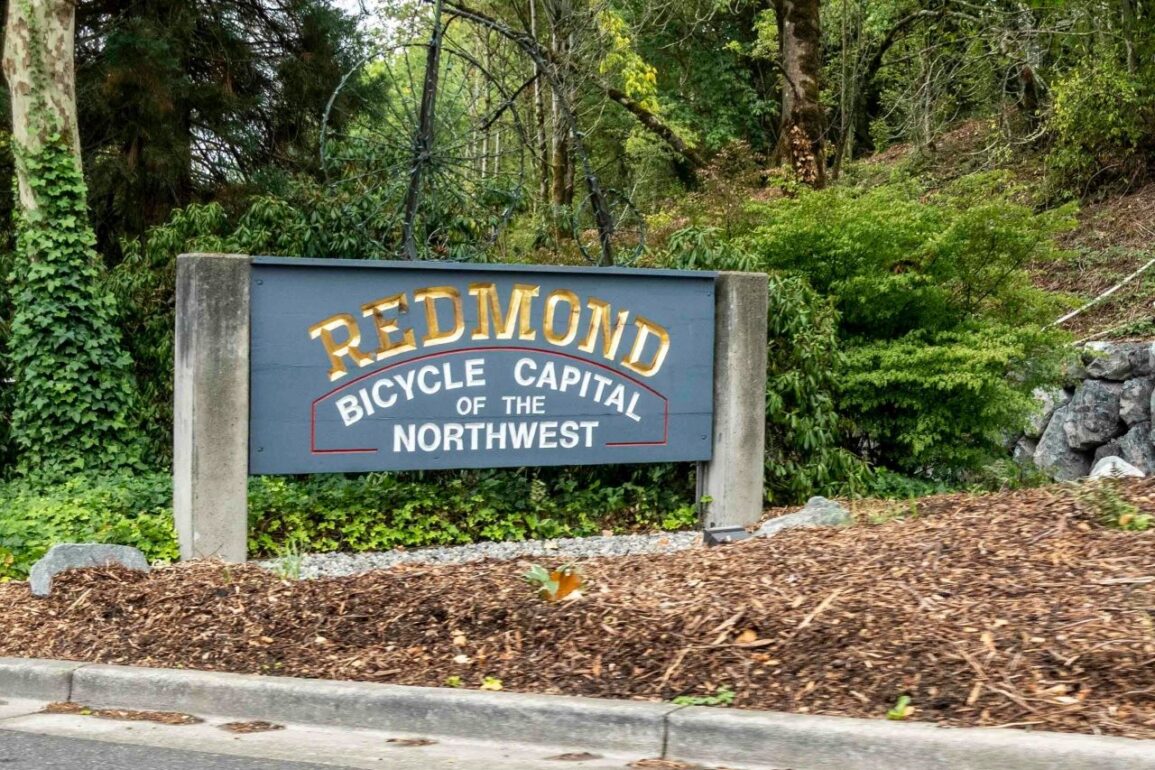In the past few decades, Redmond has become something of a boom town, thanks to the presence of employers like Microsoft, Nintendo and Google. By most accounts, the city has handled its growth with ease, becoming a national model for the ways in which small cities can plan and scale for denser populations and urban infrastructure.
The core of Redmond’s approach considered how to transform the city’s classic, car-heavy city plan into a more walkable layout with better options for bike and transit. City management tackled this in several ways, aided by a community that’s forward-thinking and eager for multi-modal transit options.
One of the cornerstones of Redmond’s city plan is the pivot from an outdated railroad to a new light rail line that will link Redmond residents to the rest of the Eastside and Seattle. The former railroad is now a walking trail, the Redmond Central Connector Trail. This 3.9-mile segment offers off-road routes for walking and cycling, and connects the city to a larger trail network.
The city has been planning for this trail for a long time, having purchased the land for it back in 2010. In 2013, the trail’s accompanying park opened, and after just one mile of the trail was completed, the Redmond Connector won a national trail and art award.
Now, the trail’s construction has reached its last phase, which will be completed in 2024. When it’s finished, it will connect to the massive Eastrail project, which spans 42 miles of interconnected hiking and biking trails across the Eastside.
Along the Redmond Connector Trail is the last stop on the planned East Link light rail extension. That station is set to open in 2025, and will serve an estimated 43,000 to 52,000 daily riders. When they arrive, passengers can easily access downtown Redmond, surrounding shops and restaurants, or the park and trail itself.
Finally, the last piece of Redmond’s successful expansion has been its thoughtful construction of apartments and housing downtown. Since the Growth Management Act of 1990, Washington state has required cities to allow more housing to absorb population growth targets. Redmond focused these growth efforts on its downtown area, creating walkable communities and a thriving culture that’s ideal for professionals and families alike.
Unlike other Eastside locales, Redmond has not been subject to lawsuits or fractious debate about its city planning and development. City leaders attribute this to the community’s sustainable mindset and a long-held desire for better transit in the area. Thanks to its decades-long coordinated efforts, the city is now seeing the fruition of plans it has been laboring on for three decades or more.
Information for this article was sourced from the Seattle Times.



